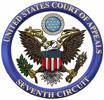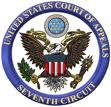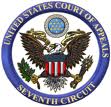Seventh Circuit Clarifies Application of Fourth Amendment to Searches of Computer Hard Drives
 While working as a life guard instructor, Matthew Mann covertly installed a video camera in a locker room in order to take footage of women changing their clothes. After the camera was discovered and turned over to the authorities, police executed a search warrant at Mann’s home for “video tapes, CD’s or other digital media, computers, and the contents of said computers, tapes, or other electronic media, to search for images of women in locker rooms or other private areas.” In connection with the search, police seized computers and an external hard drive from Mann. Police later ran forensic software on this equipment that revealed the presence of child pornography, which formed the basis of a federal prosecution.
While working as a life guard instructor, Matthew Mann covertly installed a video camera in a locker room in order to take footage of women changing their clothes. After the camera was discovered and turned over to the authorities, police executed a search warrant at Mann’s home for “video tapes, CD’s or other digital media, computers, and the contents of said computers, tapes, or other electronic media, to search for images of women in locker rooms or other private areas.” In connection with the search, police seized computers and an external hard drive from Mann. Police later ran forensic software on this equipment that revealed the presence of child pornography, which formed the basis of a federal prosecution.
The district court denied Mann’s motion to suppress the images found on his hard drives. Mann then pled guilty, but preserved the right to litigate his Fourth Amendment claim on appeal. In United States v. Mann (No. 08-3041) (Rovner, J.), the Seventh Circuit affirmed. Although the scope of the warrant was limited by its terms to a search for “images of women in locker rooms or other private areas,” the court held that police did not exceed the scope of the warrant when they collected and viewed Mann’s collection of child pornography.

 After pleading guilty in federal court to various drug-trafficking offenses, Isaiah Gregory received an eye-popping sentence of 327 months in prison — more than 27 years behind bars. Driving this extraordinary sentence was the district court’s finding that Gregory was a “career offender” under the federal sentencing guidelines. It was the career offender guideline that raised Gregory’s guidelines range from either 120-135 months (as he calculated it) or 121-151 months (as the government calculated it) to 262-327 months. Thus, the career-offender finding likely added more than fourteen years to Gregory’s sentence.
After pleading guilty in federal court to various drug-trafficking offenses, Isaiah Gregory received an eye-popping sentence of 327 months in prison — more than 27 years behind bars. Driving this extraordinary sentence was the district court’s finding that Gregory was a “career offender” under the federal sentencing guidelines. It was the career offender guideline that raised Gregory’s guidelines range from either 120-135 months (as he calculated it) or 121-151 months (as the government calculated it) to 262-327 months. Thus, the career-offender finding likely added more than fourteen years to Gregory’s sentence. The Supreme Court was not the only court wrestling this week with the admissibility of crime-lab evidence. A day after the Justices heard
The Supreme Court was not the only court wrestling this week with the admissibility of crime-lab evidence. A day after the Justices heard